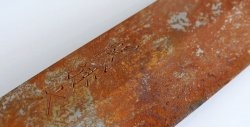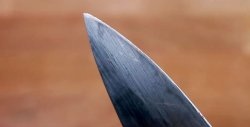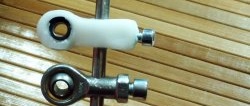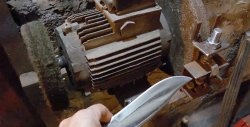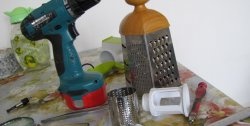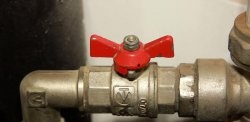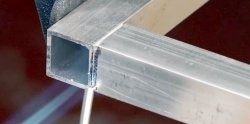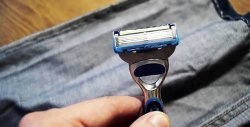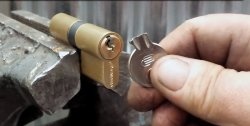5 ways to sharpen a knife without a sharpener while traveling
It is more convenient, more productive and safer to use a sharp knife, which can only be achieved by properly sharpening it. When working with a dull tool, you have to apply much more effort than is required for the work performed with a well-sharpened cutting tool.
If, during intense and therefore not very controlled manipulation of a dull knife, it breaks off the material being cut and hits the fingers, it turns out to be sharp enough to cause painful and sometimes severe injury.
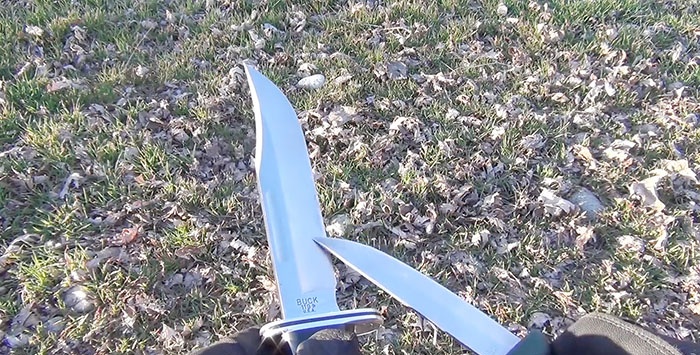
How to sharpen a knife if you don’t have a factory sharpening tool, whetstone, whetstone or grindstone at hand? They can be replaced by many objects that surround a person and are used for other purposes. Let's look at them in random order in an unusual role for them.
Almost any material can be used to tidy up a cutting tool.Simply, the softer and weaker it is in relation to the metal of the knife blade, the longer and more tedious the sharpening process will be. Therefore, we will consider only 5 really working methods.
This is an almost natural sharpening stone: very hard, slightly rough, carefully processed. It is enough to take a comfortable position and tilt the knife blade in accordance with the sharpening angle and run it several times along the edge of the glass with one and then the other side. By repeating the procedure the required number of times, you can achieve a good sharpness of the cutting edge.
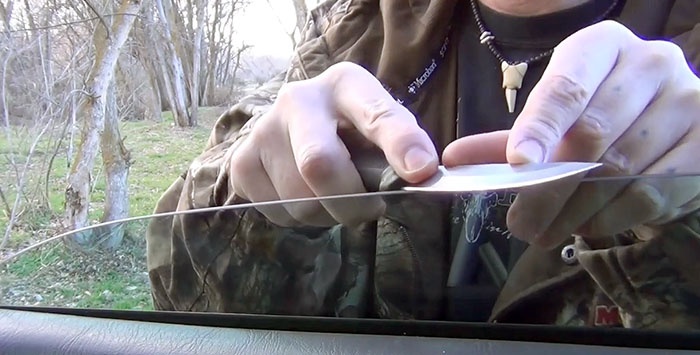
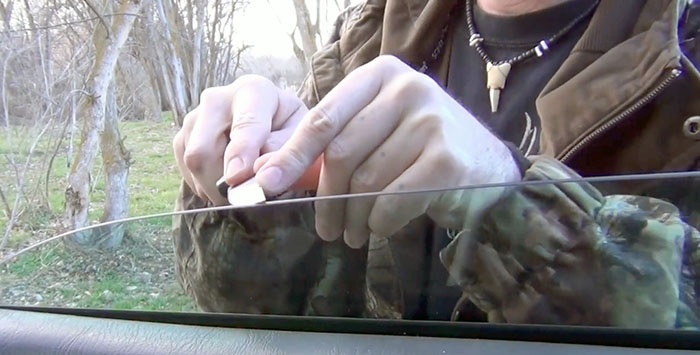
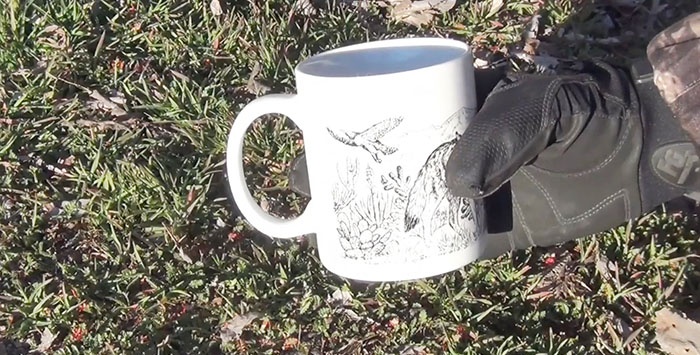
It is also quite hard - a consequence of firing in a kiln at a temperature of 1200-1280 degrees Celsius and with a slight roughness. The main components of the whetstone are evident. Turn the mug over and use the protrusion of the bottom as a block. After a short time, with sufficient persistence, the cutting edge of the knife will acquire the required sharpness.
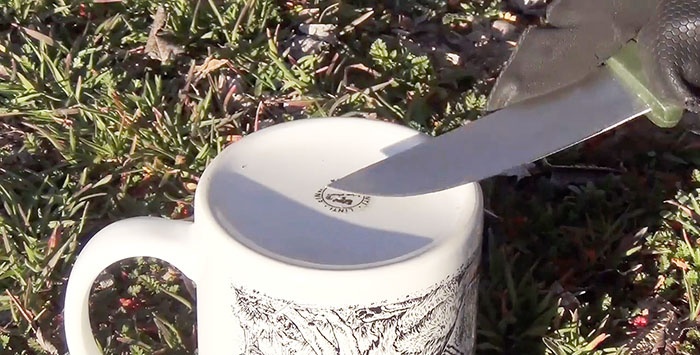

Almost a bar in miniature. It is enough to place it on a hard surface with the rough side up and the sharpener is ready. A few precise movements with the knife blade and it can be used for its intended purpose.
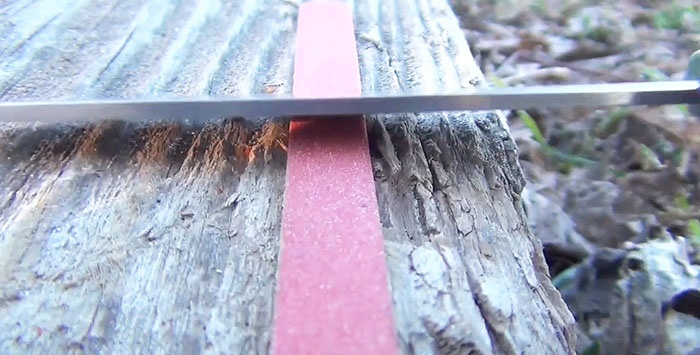

You can use its butt as a bar, or more precisely as a musat. The hardness of this part of the blade allows you to perform a new function and restore the cutting properties of a dull knife, if you show enough persistence.
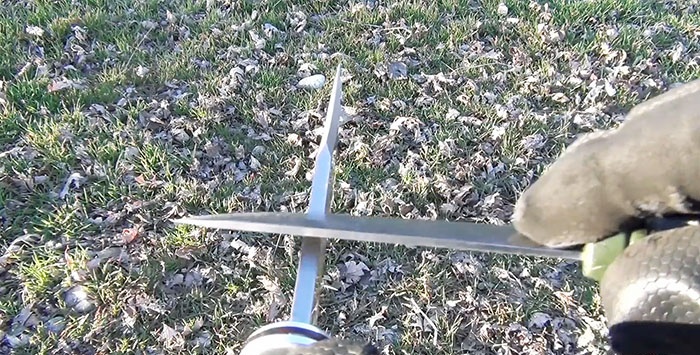
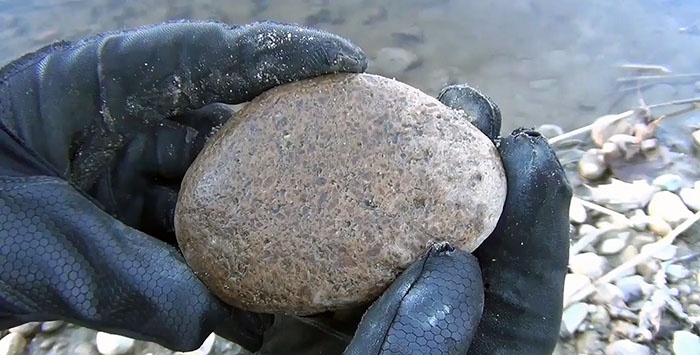
You need to choose one with a relatively flat and even surface on at least one side. As in all other cases, we sharpen the cutting edge of the knife, leading it from the handle to the tip of the blade.It is only necessary to ensure that the direction of movement of the knife along the stone is at the same angle, relative to the line of the cutting edge of the blade at the point of contact.
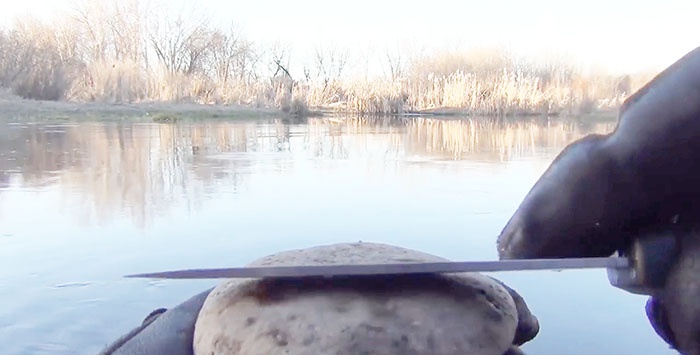
After sharpening the blade of a knife, two more operations remain - finishing and polishing. They can be done using a leather belt, a backpack strap or paracord.
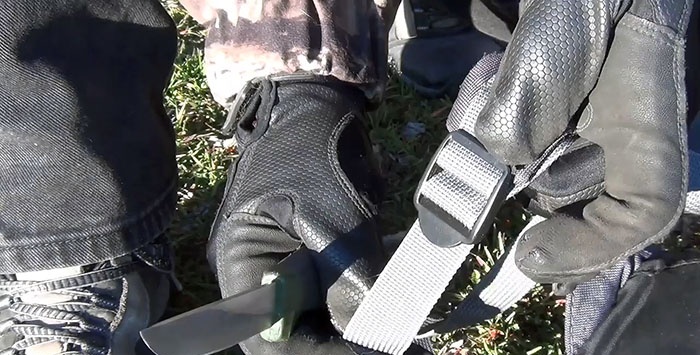
Any of these things must be pulled tightly and passed over their surface several times with a knife blade on one side and the other.
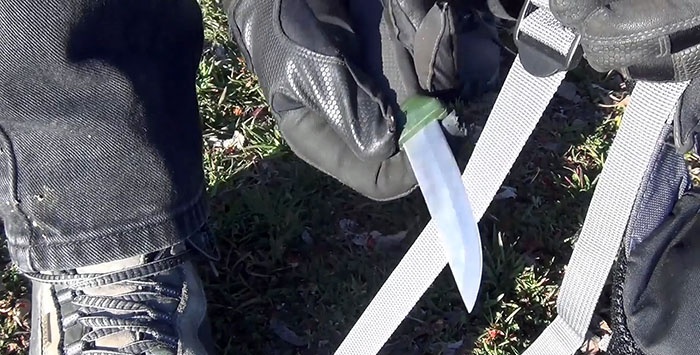
One note about sharpening the cutting edge of a knife with a natural stone. If you cannot find a stone with a flat and even surface, it is better to take two rough stones with at least one relatively flat side. Then they need to be rubbed against each other, trying to bring the surface of one of them to an almost even state, without noticeable irregularities. This way it will be possible to protect the knife from being even more unsuitable for cutting.
If, during intense and therefore not very controlled manipulation of a dull knife, it breaks off the material being cut and hits the fingers, it turns out to be sharp enough to cause painful and sometimes severe injury.

How to sharpen a knife if you don’t have a factory sharpening tool, whetstone, whetstone or grindstone at hand? They can be replaced by many objects that surround a person and are used for other purposes. Let's look at them in random order in an unusual role for them.
The process of sharpening and straightening a knife using improvised means
Almost any material can be used to tidy up a cutting tool.Simply, the softer and weaker it is in relation to the metal of the knife blade, the longer and more tedious the sharpening process will be. Therefore, we will consider only 5 really working methods.
1. The edge of a half-open car window.
This is an almost natural sharpening stone: very hard, slightly rough, carefully processed. It is enough to take a comfortable position and tilt the knife blade in accordance with the sharpening angle and run it several times along the edge of the glass with one and then the other side. By repeating the procedure the required number of times, you can achieve a good sharpness of the cutting edge.


2. Forming the bottom of a ceramic mug.

It is also quite hard - a consequence of firing in a kiln at a temperature of 1200-1280 degrees Celsius and with a slight roughness. The main components of the whetstone are evident. Turn the mug over and use the protrusion of the bottom as a block. After a short time, with sufficient persistence, the cutting edge of the knife will acquire the required sharpness.

3. Nail file.

Almost a bar in miniature. It is enough to place it on a hard surface with the rough side up and the sharpener is ready. A few precise movements with the knife blade and it can be used for its intended purpose.

4. Another knife.

You can use its butt as a bar, or more precisely as a musat. The hardness of this part of the blade allows you to perform a new function and restore the cutting properties of a dull knife, if you show enough persistence.

5. A stone raised on the shore of a body of water - a river, lake or sea.

You need to choose one with a relatively flat and even surface on at least one side. As in all other cases, we sharpen the cutting edge of the knife, leading it from the handle to the tip of the blade.It is only necessary to ensure that the direction of movement of the knife along the stone is at the same angle, relative to the line of the cutting edge of the blade at the point of contact.

After sharpening the blade of a knife, two more operations remain - finishing and polishing. They can be done using a leather belt, a backpack strap or paracord.

Any of these things must be pulled tightly and passed over their surface several times with a knife blade on one side and the other.

P.S.
One note about sharpening the cutting edge of a knife with a natural stone. If you cannot find a stone with a flat and even surface, it is better to take two rough stones with at least one relatively flat side. Then they need to be rubbed against each other, trying to bring the surface of one of them to an almost even state, without noticeable irregularities. This way it will be possible to protect the knife from being even more unsuitable for cutting.
Watch the video
Similar master classes
Particularly interesting
Comments (1)


